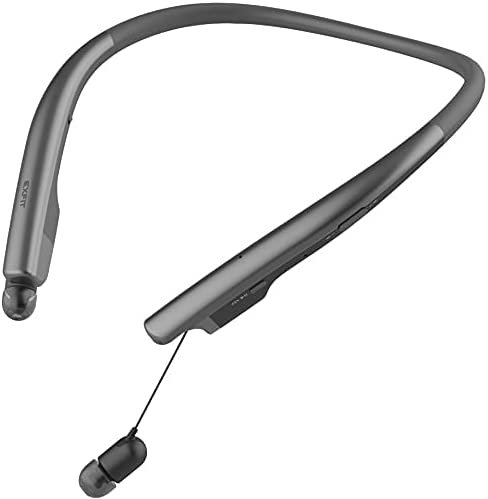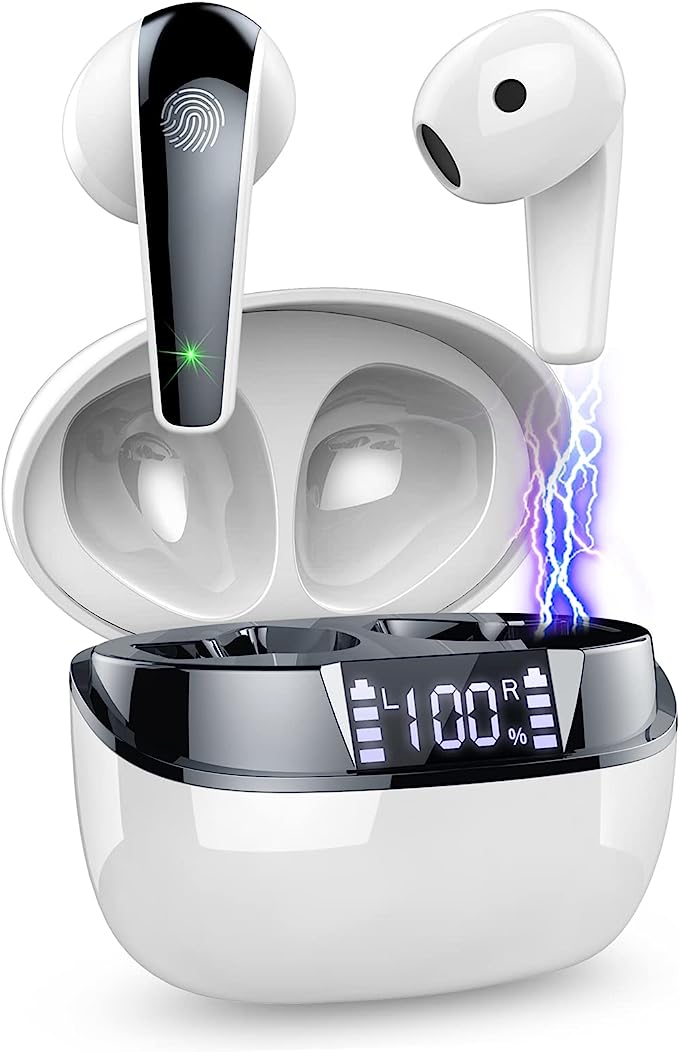Picture this: you’re hitting your stride on a morning run, the perfect beat drops, and there are no annoying wires bouncing against your neck. Or perhaps you’re on a crowded train, cocooned in your favorite podcast, the noise of the commute melting away. This freedom, this personal audio bubble, is largely brought to us by the quiet revolution of True Wireless Stereo (TWS) earbuds. In just a few short years, these tiny devices have gone from tech novelty to near-essential companions, fundamentally changing how we interact with sound and the world around us.
But stepping into the market for a new pair can feel like navigating a tech jungle. Bluetooth versions, driver sizes, IP ratings, battery hours – the specifications come thick and fast. What truly matters? How do these technical details translate into the actual experience of listening?
Let’s pull back the curtain. Instead of a traditional review, we’ll use the Monster N-Lite 210 Wireless Earbuds (Model W36) as our guide, a case study to explore the fascinating intersection of physics, engineering, and human-centric design that defines modern personal audio. We’ll unpack the technology piece by piece, moving beyond the marketing claims to understand the science shaping your everyday soundscape.

The Heartbeat of Sound: Deconstructing the 13mm Driver
How can something small enough to nestle in your ear produce sound that feels room-filling, with bass that resonates deep within your chest? The magic begins with the driver, the miniature speaker component that acts as the engine of sound production in any headphone or earbud. Think of it like the skin of a drum. An electrical signal makes a thin membrane inside the driver – the diaphragm – vibrate rapidly. These vibrations push and pull the air, creating pressure waves that our ears interpret as sound.
The Monster N-Lite 210 specifications highlight a 13mm oversized driver. Why does size matter here? Basic physics tells us that, generally speaking, a larger diaphragm can move a larger volume of air with each vibration. Imagine hitting a small hand drum versus a large bass drum – the larger drum produces deeper, more resonant tones because its larger surface moves more air. Similarly, a larger driver diaphragm has the potential to reproduce lower frequencies (the bass and sub-bass notes that give music its punch and warmth) more effectively and potentially reach higher volumes with less effort, or distortion.
Monster states their goal is to deliver “Pure Monster Sound” characterized by “rich bass” and “minimal distortion.” While the perception of sound is subjective, employing a relatively large 13mm driver is a deliberate engineering choice often made precisely to enhance that low-end response and create a fuller, more immersive audio profile. Of course, audio engineering is a world of intricate balances. A larger driver might also demand slightly more power or influence the physical size and shape of the earbud itself – trade-offs engineers constantly navigate in pursuit of the desired sound signature.

The Invisible Handshake: Making Sense of Bluetooth 5.4
The “wireless” in wireless earbuds is Courtesy of Bluetooth, a remarkable short-range radio technology that acts like an invisible, digital handshake between your devices. The N-Lite 210 features Bluetooth 5.4. It’s easy to get lost in version numbers, but think of Bluetooth’s evolution like refining that handshake over time – making it quicker, stronger, more reliable, and less draining on battery life.
Compared to older generations (like Bluetooth 4.x), the 5.x series generally brought significant improvements. While the jump from, say, 5.3 to 5.4 might involve more subtle refinements (often focusing on efficiency, security, or specific features like Auracast support, though specific 5.4 benefits depend on device implementation), the foundation remains strong. What does this mean for your listening experience with the N-Lite 210, based on its description?
- Stability and Reach: The description mentions a “strong signal” and aims for connectivity up to 12 meters (about 39 feet) in ideal conditions. Think of Bluetooth 5.4 as potentially offering a more robust and persistent connection, less prone to annoying dropouts when you move around your home or office, or put your phone in your back pocket. Real-world range, however, is always affected by obstacles like walls and interference from other wireless devices.
- Latency: This refers to the tiny delay between the moment your phone sends the audio signal and the moment you hear it in your earbuds. High latency is noticeable and jarring when watching videos (lip-sync issues) or playing games. While the description claims a “low latency listening experience,” it’s worth noting that newer Bluetooth standards generally aim to reduce latency compared to older ones, contributing to better audio-visual synchronization. The actual latency experienced also depends on the device sending the audio and the specific audio codec being used.
- Seamless Use: Convenience features like “auto re-connection” (where the earbuds automatically pair with your last device when taken out of the case) streamline the user experience, making the technology feel almost invisible – the hallmark of good design.
Ultimately, a modern Bluetooth version like 5.4 is about fostering a more reliable and seamless connection, letting you focus on the content, not the technology facilitating it.

Fueling the Freedom: The Endurance of Modern Earbuds
There’s a particular kind of modern anxiety reserved for watching the battery icon on our favorite gadgets dwindle towards red. Wireless earbuds, used throughout the day, are prime candidates for this stress. The Monster N-Lite 210 addresses this head-on, promising up to 32 hours of playtime.
It’s crucial to understand this figure usually represents the combined endurance: the listening time you get from the earbuds on a single charge, plus the additional full charges provided by the portable charging case they live in. Think of the earbuds having their own fuel tank, and the case acting as a pocket-sized power bank, ready to refuel them several times over before the case itself needs recharging.
This impressive longevity is a testament to two key technological advancements. Firstly, the ever-increasing energy density of Lithium-ion batteries, allowing more power storage in smaller spaces. Secondly, the enhanced power efficiency of modern chipsets, including those associated with newer Bluetooth standards like 5.4, which sip power more frugally during operation and standby.
What does this mean practically? It translates to freedom. Freedom to tackle a full workday’s worth of calls and background music, power through multiple workouts during the week, survive a long-haul flight, or simply forget to charge them overnight without facing silence the next morning. The inclusion of a Type-C charging port on the case further adds to the convenience, aligning with the charging standard for most modern phones and laptops, reducing cable clutter.

Designed for Humans: Marrying Comfort, Stability, and Grit
All the impressive audio specs and battery life in the world are meaningless if the earbuds are uncomfortable to wear or fall out the moment you pick up the pace. This is where ergonomics and durability take center stage. The N-Lite 210 features an Ergonomic Fit Design, a term that encompasses more than just aesthetics.
(A) The Ergonomic Embrace:
True ergonomic design in earbuds is about sculpting the device to align with the complex contours of the human ear. When done right, it delivers a trifecta of benefits:
- Comfort: A well-designed earbud should feel almost like it disappears, allowing for hours of listening without pressure points or soreness.
- Stability: Whether you’re commuting, working out, or just moving around, the earbuds should stay securely in place. A snug fit prevents them from dislodging, which is particularly crucial during exercise – imagine chasing a dropped earbud mid-sprint!
- Passive Noise Isolation: A good seal between the earbud tip and your ear canal physically blocks out a significant amount of external ambient noise. This isn’t active noise cancellation (which uses electronics), but rather a physical barrier, like wearing well-fitting earplugs. It enhances immersion in your audio and often allows you to listen at lower, safer volumes.
Recognizing that no two ears are identical, the inclusion of three different sizes of ear tips and ear supports is vital. This allows users to experiment and find the combination that provides their unique ears with the optimal balance of comfort, stability, and seal.
(B) Weathering the Storm (or Sweat): Decoding IPX5
Life happens. Workouts get sweaty, and sometimes you get caught in unexpected rain. Earbuds designed for everyday life need a degree of resilience. The N-Lite 210 boasts an IPX5 waterproof rating. Let’s quickly demystify that code:
- IP stands for Ingress Protection – it’s an international standard (IEC 60529).
- The first digit (the ‘X’ here) relates to protection against solid particles (like dust). ‘X’ means it hasn’t been specifically tested or rated for dust ingress.
- The second digit (the ‘5’) relates to protection against liquids. A ‘5’ rating signifies protection against low-pressure water jets projected from any direction for at least 3 minutes.
Think of it like gear ratings for adventurers: IPX5 is akin to a reliable raincoat. It means the earbuds are designed to withstand sweat during intense exercise and shrug off raindrops or accidental splashes. This provides peace of mind for active users or those living in wetter climates. However, it’s crucial to understand the limits: IPX5 does not mean the earbuds are fully waterproof for swimming or submersion. They can handle jets and splashes, but shouldn’t be taken into the pool or shower.
Fingertip Symphony & Clear Conversations: The Interface
Interacting with your audio shouldn’t require constant phone-fumbling. The N-Lite 210 incorporates Easily Touch Controls, likely using capacitive sensing technology similar to your smartphone screen, allowing you to manage essential functions directly from the earbuds. With simple taps or touches, you can typically play or pause music, skip tracks, adjust volume, and answer or end calls. This convenience is especially noticeable when you’re on the move, working out, or have your hands full. Imagine effortlessly skipping a song during your run without breaking stride or missing a beat.
Furthermore, the inclusion of a built-in microphone turns the earbuds into a communication device. While the description aims for “Crystal Clear Call,” which is a subjective manufacturer goal, the presence of the microphone enables hands-free phone calls and interaction with voice assistants, adding another layer of practical functionality to these compact audio companions.
Conclusion: The Sum of the Parts – Crafting the Audio Experience
Exploring the Monster N-Lite 210 reveals a microcosm of the engineering philosophy behind modern TWS earbuds. It’s not just about one standout feature, but about the careful synergy of multiple technological choices. The potential for powerful sound stems from the physics governing the 13mm driver. The reliability and ease of use lean on the advancements within Bluetooth 5.4. The freedom from constant charging is delivered by efficient battery technology. The comfort and stability during active use are rooted in ergonomic design principles and customizable fit options. And the confidence to use them in various conditions comes from achieving an IPX5 rating for water resistance. Touch controls and a built-in mic round out the package, focusing on user convenience.
Each element plays its part, reflecting countless hours of research, development, and refinement in the quest to shrink sophisticated audio technology into something we can comfortably wear all day. As TWS technology continues its rapid evolution, we can expect even more innovation in sound quality, connectivity, battery life, and intelligent features. The Monster N-Lite 210 represents one snapshot of this journey – a blend of established principles and modern refinements aimed at delivering a balanced, reliable, and enjoyable personal audio experience for the rhythm of our daily lives.



